The FSP Hydro PTM X Pro 1000W ATX 3.0 PSU Review: Premium Platinum Power
by E. Fylladitakis on March 7, 2023 8:00 AM EST- Posted in
- Cases/Cooling/PSUs
- PSUs
- 1000W
- FSP
- 80Plus Platinum
- ATX v3.0
- 12VHPWR
Cold Test Results (~22°C Ambient)
For the testing of PSUs, we are using high precision electronic loads with a maximum power draw of 2700 Watts, a Rigol DS5042M 40 MHz oscilloscope, an Extech 380803 power analyzer, two high precision UNI-T UT-325 digital thermometers, an Extech HD600 SPL meter, a self-designed hotbox and various other bits and parts. For a thorough explanation of our testing methodology and more details on our equipment, please refer to our How We Test PSUs - 2014 Pipeline post.
When aiming for an 80Plus certification, designers usually focus on receiving the certification with an input voltage of 115 VAC, where the requirements are lower. The FSP Hydro PTM X Pro is a rare example of a unit managing to reach the 80Plus certification requirements regardless whether the input voltage is 115 VAC or 230 VAC. It displayed exceptional conversion efficiency figures, resulting to an average nominal load range (20% to 100% of the unit's capacity) efficiency of 93.6% when powered from a 230 VAC source, which drops down to 92.2% when powered from a 115 VAC source. These figures are high even for an 80Plus Platinum certified unit. Furthermore, this is a very rare case where the efficiency jumps up momentously when the load increases towards 20%, so the losses when the load is very low are actually higher and make the unit run a bit hotter.
We ran our tests with the Eco mode disabled, meaning that the fan began spinning instantly when the PSU was powered on. The cooling profile of the Hydro PTM X Pro is very similar to that of the cheaper Hydro G Pro but the difference in efficiency gives the former a vast advantage. The fan stays almost inaudible while the load is lower than 500 Watt, at which point it will begin spinning quicker in order to cope with the increased losses. However, the noise does not reach very high figures and the fan never reached its maximum speed even though the component temperatures are very low for a unit with that high a power capacity. There was clearly much room for better acoustics here but, much like we have seen in their previous designs, FSPs engineers steer their designs towards reliability over acoustics.


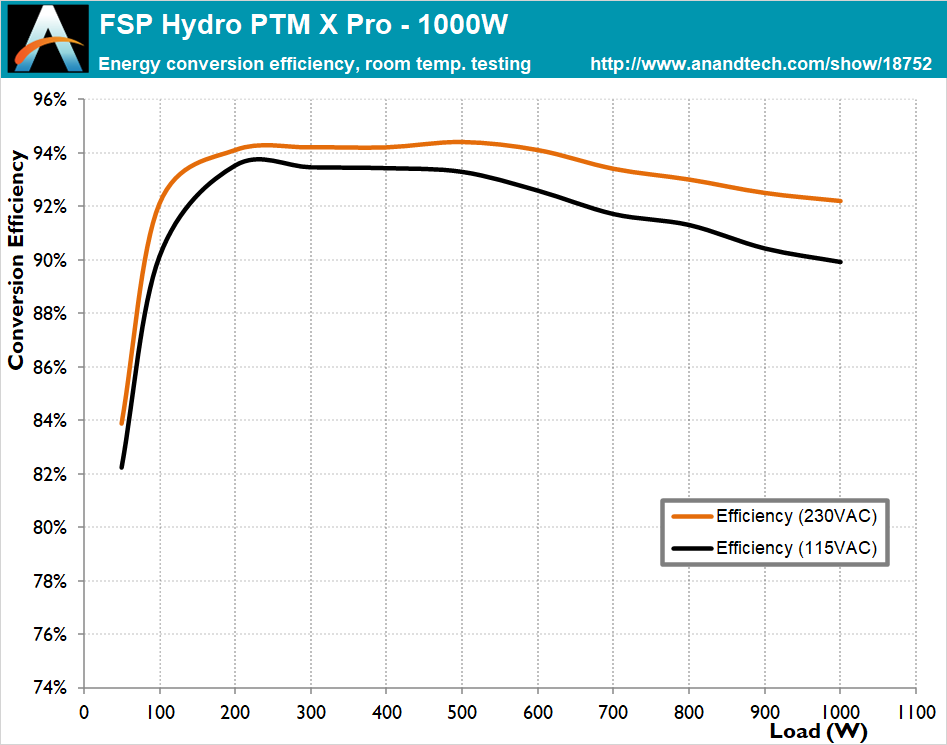
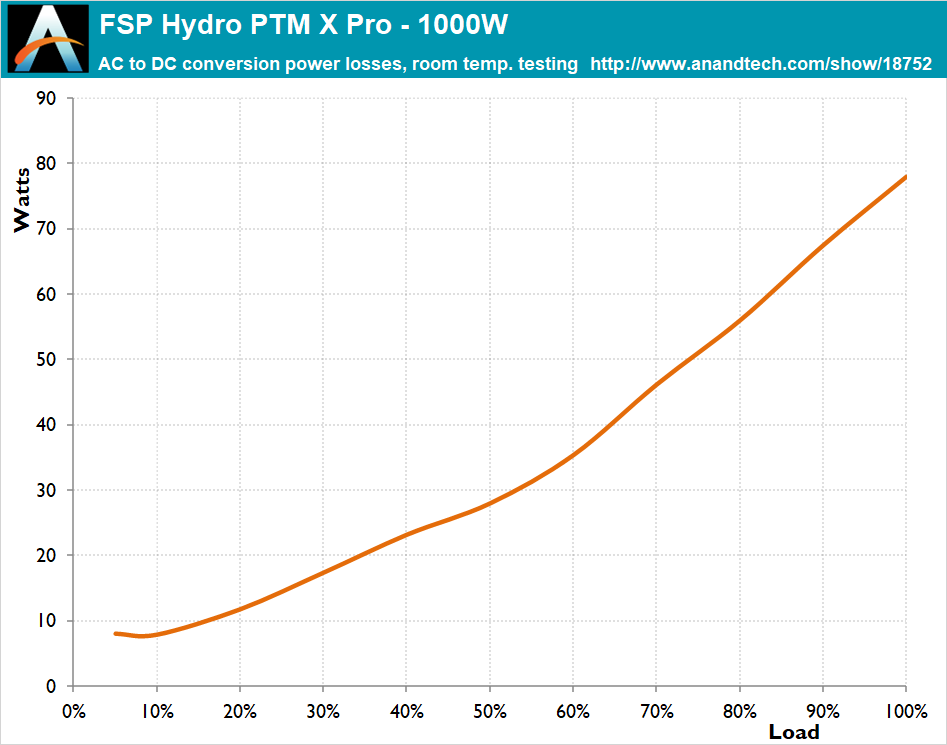
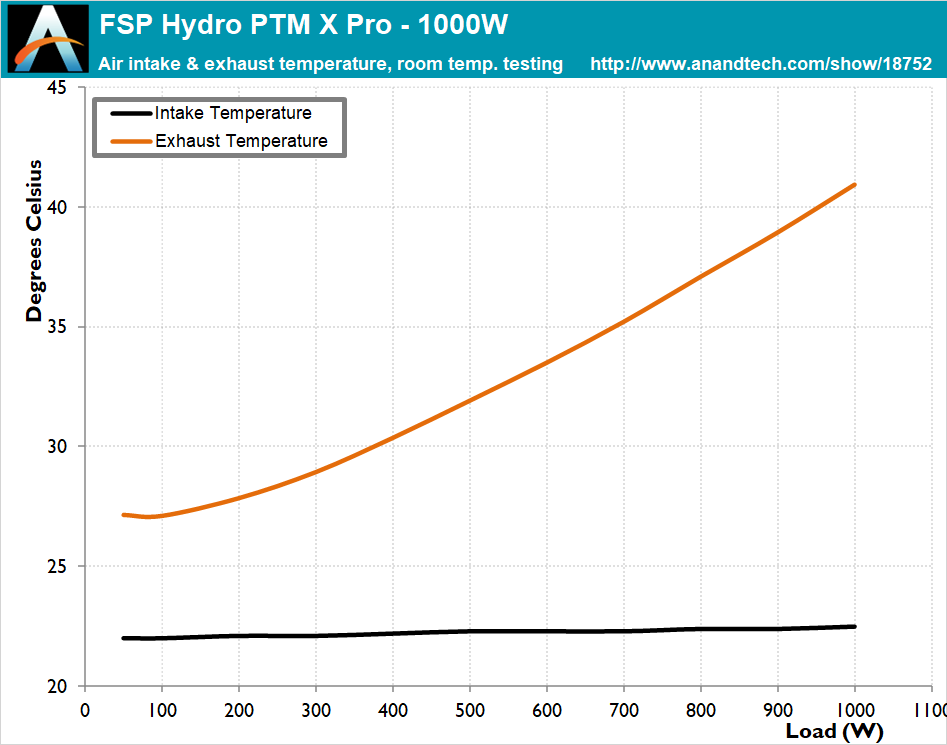
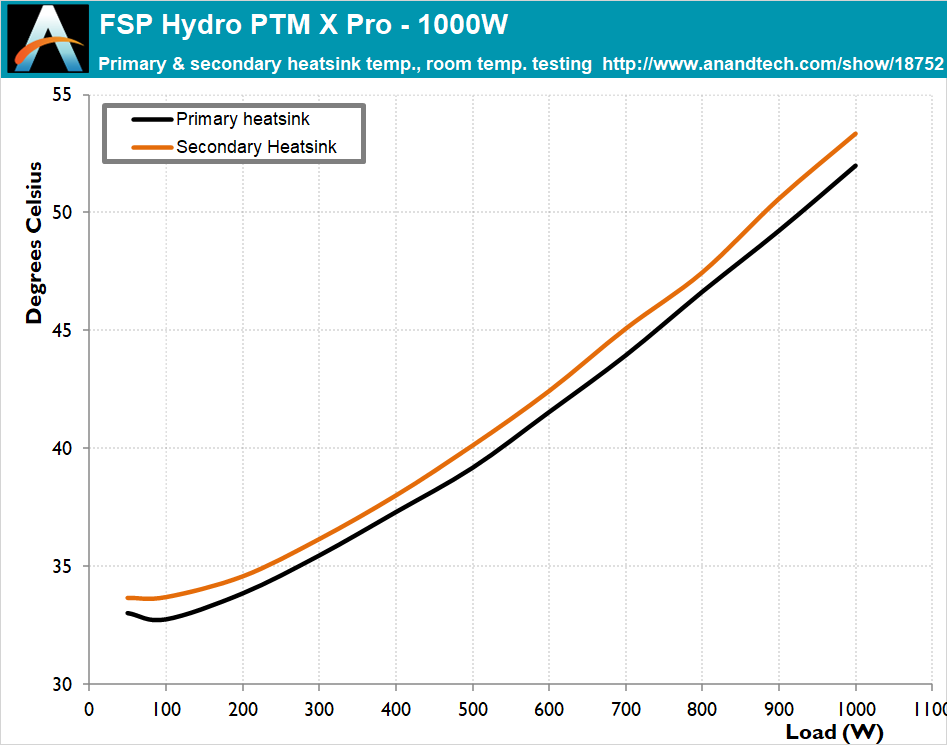
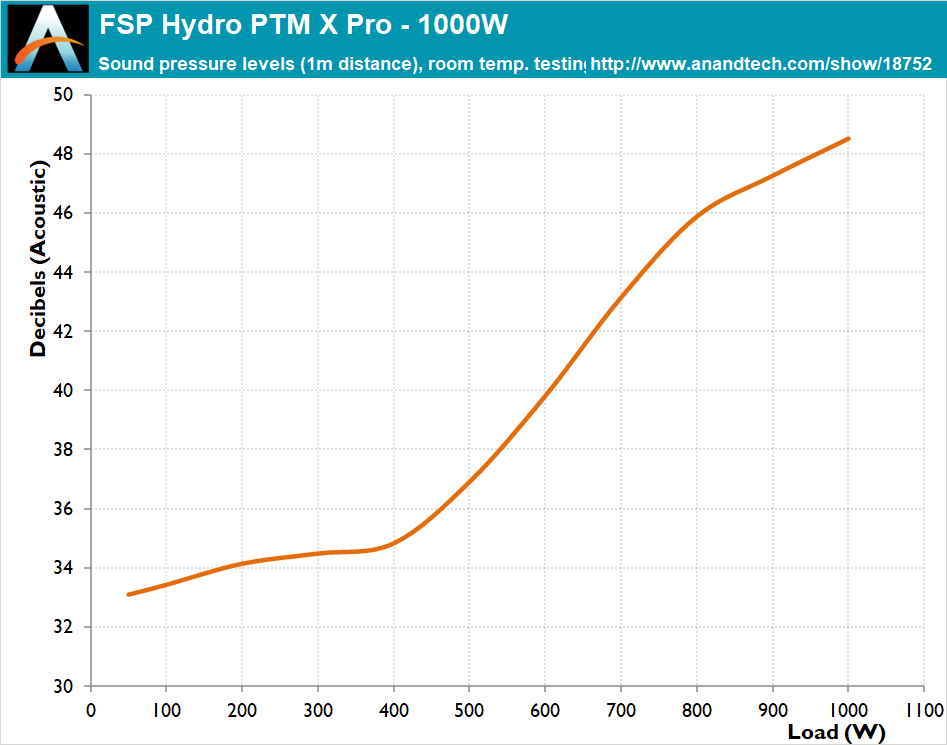








2 Comments
View All Comments
achinhorn - Wednesday, March 8, 2023 - link
Hey -- great article thanks. Curious why you guys don't make direct comparisons to other contending PSU's? A simple table comparing basics like cost, wattage, rating, ATX conforming, with maybe one extra column for standout differences/product novelties would be so clutch. To take it further -- why not product comparison charts in each category you test in?My main purpose for visiting this site is to be able to make informed buying decisions; currently in order to do that effectively for PSU's using Anandtech as my resource, I'd need to read every single PSU article of the past ~year, compare the individual graphs from each category for each product across articles, and compile product data. That's a tall order. For other Anantech articles covering other PC components, I can just read the latest article and see where that product lands.
Techie2 - Wednesday, March 8, 2023 - link
I'm sure the various colored stickers will be a big selling point for the intended audience. Hopefully Mommy and Daddy won't be too upset with the price. It's about 1/5th the price of a good GPU card for gamers.The high-end components are some what wasted by not using the std. ATX case size or slightly larger and a 135mm fan. Customers could have performance, efficiency and acoustics all in one PSU package.